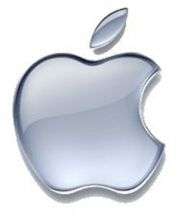December 26, 2013 weblog
Apple is granted hover and heart-rate monitoring patents

(Phys.org) —Apple has been awarded patents that include one for an accurate touch and hover panel, originally filed back in 2010, and another for an embedded heart rate monitor, originally filed in 2009. Details of the patents were reported by AppleInsider.
The touch and hover patent involves devices that can recognize something like a finger or stylus hovering above a display panel without actually touching the screen. The name of the patent is "Touch and hover signal drift compensation" and it describes a system in which a touchscreen display can accurately determine both hover and touch events.
According to the patent, "Some touch sensitive devices can also recognize a hover event, i.e., an object near but not touching the touch sensor panel, and the position of the hover event at the panel. The touch sensitive device can then process the hover event in a manner similar to that for a touch event, where the computing system can interpret the hover event in according with the display appearing at the time of the hover event, and thereafter can perform one or more actions based on the hover event."
Brian Michael King, Omar Leung, Paul G. Puskarich, Jeffrey Traer Bernstein, Andrea Mucignat, Avi E. Cieplinski, Muhammad U. Choudry, Praveen R. Subramani, Marc J. Piche, David T. Amm and Duncan Robert Kerr were named in the patent as inventors.
Another patent issued is "Seamlessly embedded heart rate monitor." This presents an electronic device having an integrated sensor for detecting a user's cardiac activity and cardiac electrical signals. The patent was filed in 2009 and named Gloria Lin, Taido Nakajima, Pareet Rahul, and Andrew Hodge as the patent's inventors.
Here is where it gets interesting: an application might be one of a biometric tool for secure identification or for reading moods. According to the patent, "Using the detected signals, the electronic device can identify or authenticate the user and perform an operation based on the identity of the user. In some embodiments, the electronic device can determine the user's mood from the cardiac signals and provide data related to the user's mood."
The patent noted also that "electrical signals generated by the user can be transmitted from the user's skin through the electronic device housing to the leads." In talking about biometric-based approaches to authenticate a user, the patent explained that "In some embodiments, an electronic device can authenticate a user based on the attributes of the user's heartbeat. For example, the durations of particular portions of a user's heart rhythm, or the relative size of peaks of a user's electrocardiogram (EKG) can be processed and compared to a stored profile to authenticate a user of the device."
AppleInsider noted that "The latest Apple patent is evidence that the company is actively investigating deployable biometric security solutions that rely on users' bodies rather than stored or memorized codes, one such system being the Touch ID fingerprint reader."
More information: — Touch and hover signal drift compensation
© 2013 Phys.org





















